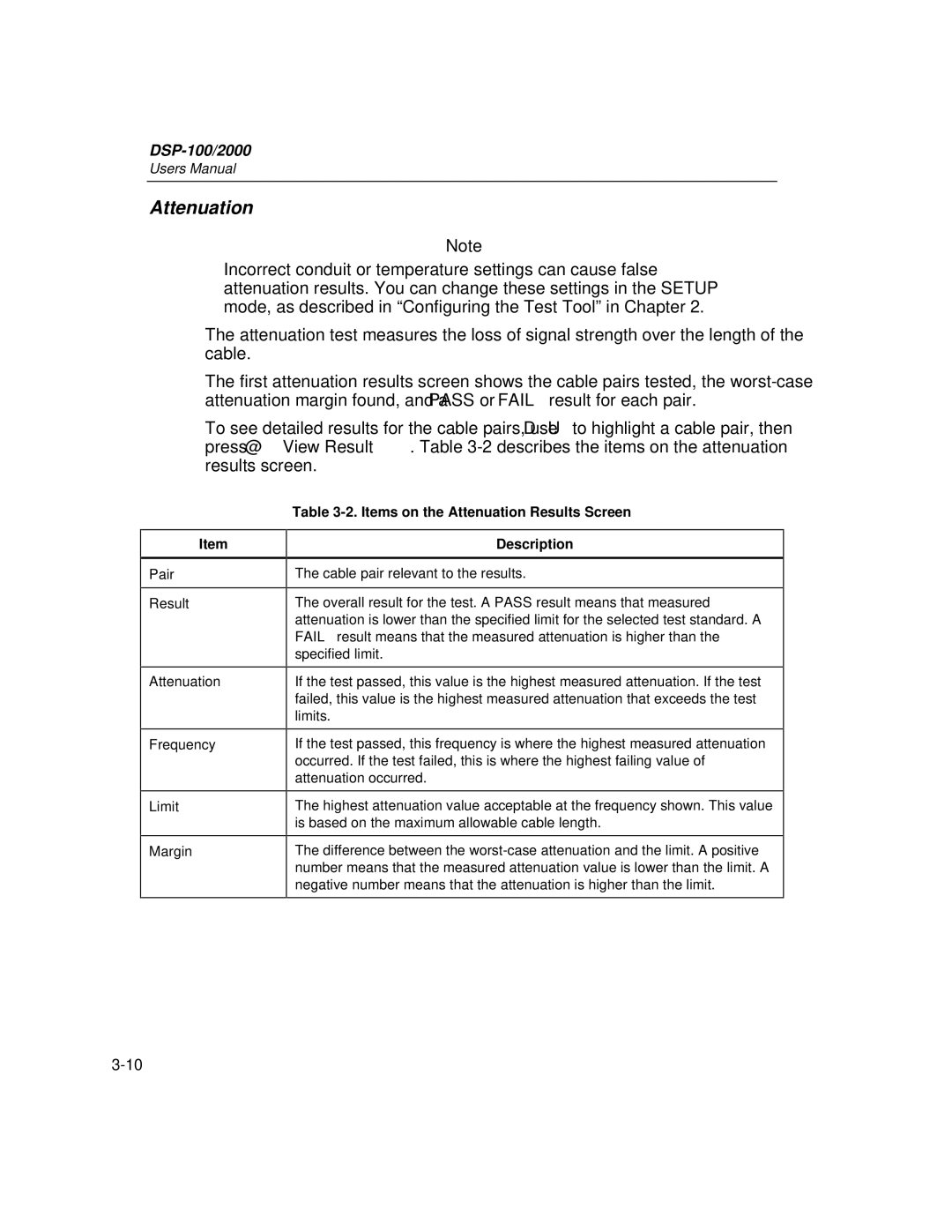
DSP-100/2000
Users Manual
Attenuation
Note
Incorrect conduit or temperature settings can cause false attenuation results. You can change these settings in the SETUP mode, as described in “Configuring the Test Tool” in Chapter 2.
The attenuation test measures the loss of signal strength over the length of the cable.
The first attenuation results screen shows the cable pairs tested, the
To see detailed results for the cable pairs, use DUto highlight a cable pair, then press @View Result. Table
Item
Pair
Result
Attenuation
Frequency
Limit
Margin
Table 3-2. Items on the Attenuation Results Screen
Description
The cable pair relevant to the results.
The overall result for the test. A PASS result means that measured attenuation is lower than the specified limit for the selected test standard. A FAIL result means that the measured attenuation is higher than the specified limit.
If the test passed, this value is the highest measured attenuation. If the test failed, this value is the highest measured attenuation that exceeds the test limits.
If the test passed, this frequency is where the highest measured attenuation occurred. If the test failed, this is where the highest failing value of attenuation occurred.
The highest attenuation value acceptable at the frequency shown. This value is based on the maximum allowable cable length.
The difference between the
